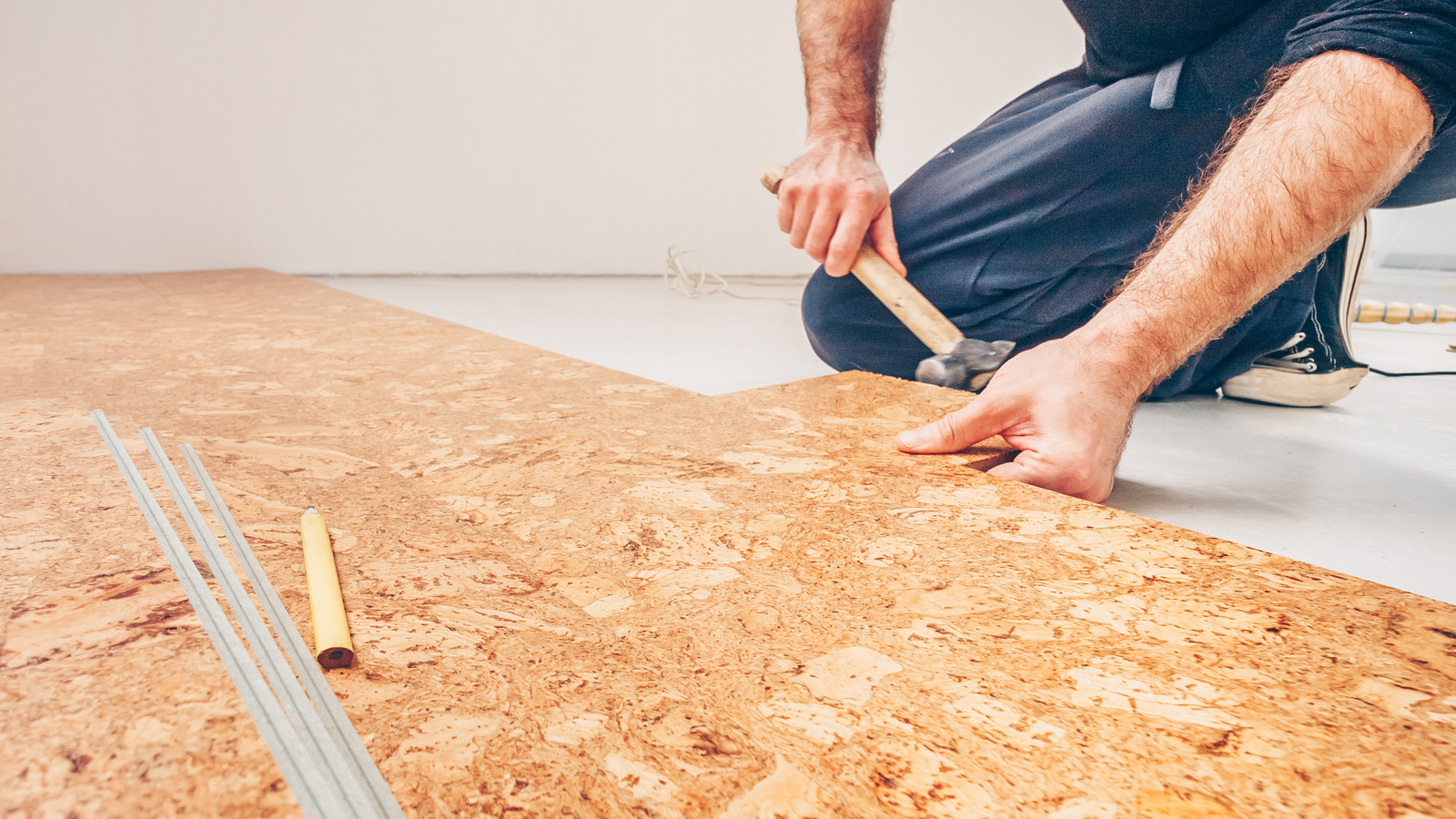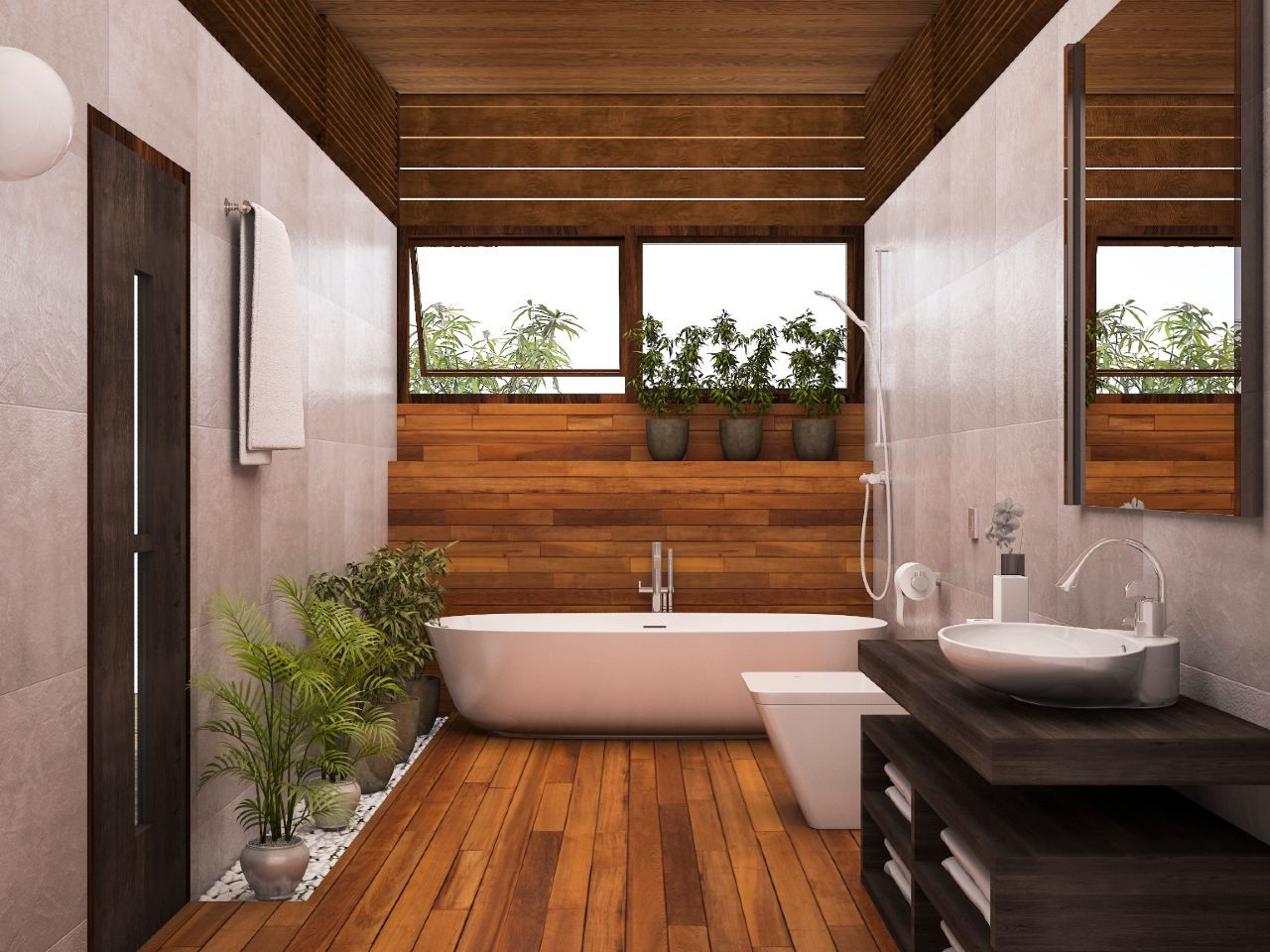Pros and Cons of White Cork Flooring in Bathrooms

White cork flooring bathroom – White cork flooring is an attractive and durable option for bathrooms, but it’s important to weigh the pros and cons before making a decision. Here are some of the key advantages and disadvantages to consider:
Durability and Water Resistance
Cork flooring is naturally water-resistant, making it a good choice for bathrooms. It is also durable and can withstand heavy foot traffic and moisture. However, it is important to note that cork flooring is not waterproof, and it can be damaged by prolonged exposure to water. It is therefore important to seal the flooring properly and to avoid using it in areas where it will be constantly exposed to water, such as inside the shower or bathtub.
The elegant aesthetics of white cork flooring lend an air of sophistication to bathrooms, creating a serene and inviting ambiance. For those curious about the presidential abodes, the White House boasts a remarkable number of bathrooms. Discover the secrets behind the opulent bathrooms of the nation’s most famous residence, while envisioning the luxurious possibilities that white cork flooring offers for your own bathroom sanctuary.
Maintenance, White cork flooring bathroom
Cork flooring is relatively easy to maintain. It can be swept or vacuumed regularly, and it can be mopped with a damp mop. However, it is important to avoid using harsh chemicals or abrasive cleaners, as these can damage the flooring.
Aesthetic Appeal
White cork flooring has a unique and attractive appearance. It is a natural material that adds warmth and texture to a bathroom. It is also a versatile material that can be used in a variety of bathroom designs, from traditional to contemporary.
Cost
Cork flooring is a relatively expensive flooring option. However, it is important to consider the long-term benefits of cork flooring, such as its durability and water resistance. Cork flooring can also add value to a home.
As the warm, natural tones of white cork flooring grace your bathroom, creating a tranquil ambiance, consider complementing it with the exquisite Kingston Brass oil rubbed bronze bathroom faucet. Its elegant curves and rich finish will enhance the sophistication of your bathroom, seamlessly blending with the earthy charm of the white cork flooring.
Susceptibility to Staining
Cork flooring is susceptible to staining. It is important to avoid spilling liquids on the flooring, and to clean up spills immediately. Cork flooring can also be stained by furniture or other objects that are placed on it. It is therefore important to use protective mats or coasters under furniture and other objects.
Design Considerations for White Cork Flooring in Bathrooms: White Cork Flooring Bathroom
:max_bytes(150000):strip_icc()/assorted-cork-tiles-elevated-view-200544917-001-5849d2215f9b58a8cdcf1344.jpg)
White cork flooring in bathrooms offers a unique opportunity to create a serene and inviting space. Its warm, natural texture and light color create a welcoming ambiance, while its durability and water resistance make it an excellent choice for wet environments.
When incorporating white cork flooring into your bathroom design, consider the following factors:
Color Combinations
White cork flooring provides a neutral base that pairs well with a wide range of colors. For a classic and elegant look, combine it with black, navy, or gray. For a more vibrant and playful bathroom, consider adding pops of color through towels, shower curtains, or artwork.
Patterns
Cork flooring is available in a variety of patterns, including planks, tiles, and herringbone. Choose a pattern that complements the overall style of your bathroom. For a traditional look, opt for planks or tiles. For a more modern or contemporary style, consider herringbone.
Textures
Cork flooring has a unique texture that can add visual interest to your bathroom. Combine it with other textures, such as stone, tile, or wood, to create a layered and dynamic space.
Lighting
Lighting plays a crucial role in enhancing the appearance of white cork flooring. Natural light will bring out its warmth and texture, while artificial light can create a more intimate and cozy ambiance. Consider using a combination of overhead lighting, recessed lighting, and accent lighting to create a well-lit and inviting bathroom.
Installation and Maintenance of White Cork Flooring in Bathrooms

Installing and maintaining white cork flooring in bathrooms requires specific techniques to ensure its longevity and water resistance. Here’s a step-by-step guide to the installation process, followed by tips for proper sealing, cleaning, and maintenance.
Installation
Before installing white cork flooring, prepare the subfloor by ensuring it is level, dry, and free of debris. Install an underlayment specifically designed for cork flooring to provide cushioning and sound absorption.
- Apply a high-quality adhesive specifically designed for cork flooring to the subfloor, following the manufacturer’s instructions.
- Carefully place the cork tiles onto the adhesive, ensuring they are aligned and pressed firmly into place.
- Use a roller or weighted object to ensure the tiles are securely bonded to the subfloor.
Sealing and Protection
To protect white cork flooring from moisture and stains, it is essential to seal it properly. Use a high-quality cork sealant specifically designed for bathrooms.
- Apply the sealant evenly over the entire surface of the floor, ensuring it penetrates the pores of the cork.
- Allow the sealant to dry completely before using the floor.
- Repeat the sealing process every 2-3 years to maintain its protective properties.
Cleaning and Maintenance
Regular cleaning and maintenance are crucial to preserve the appearance and longevity of white cork flooring in bathrooms.
- Use a damp mop or cloth with a mild detergent specifically designed for cork flooring.
- Avoid using abrasive cleaners or excessive water, as they can damage the finish.
- Immediately wipe up any spills or water droplets to prevent staining.
- Protect the floor from heavy furniture or sharp objects by using mats or pads.